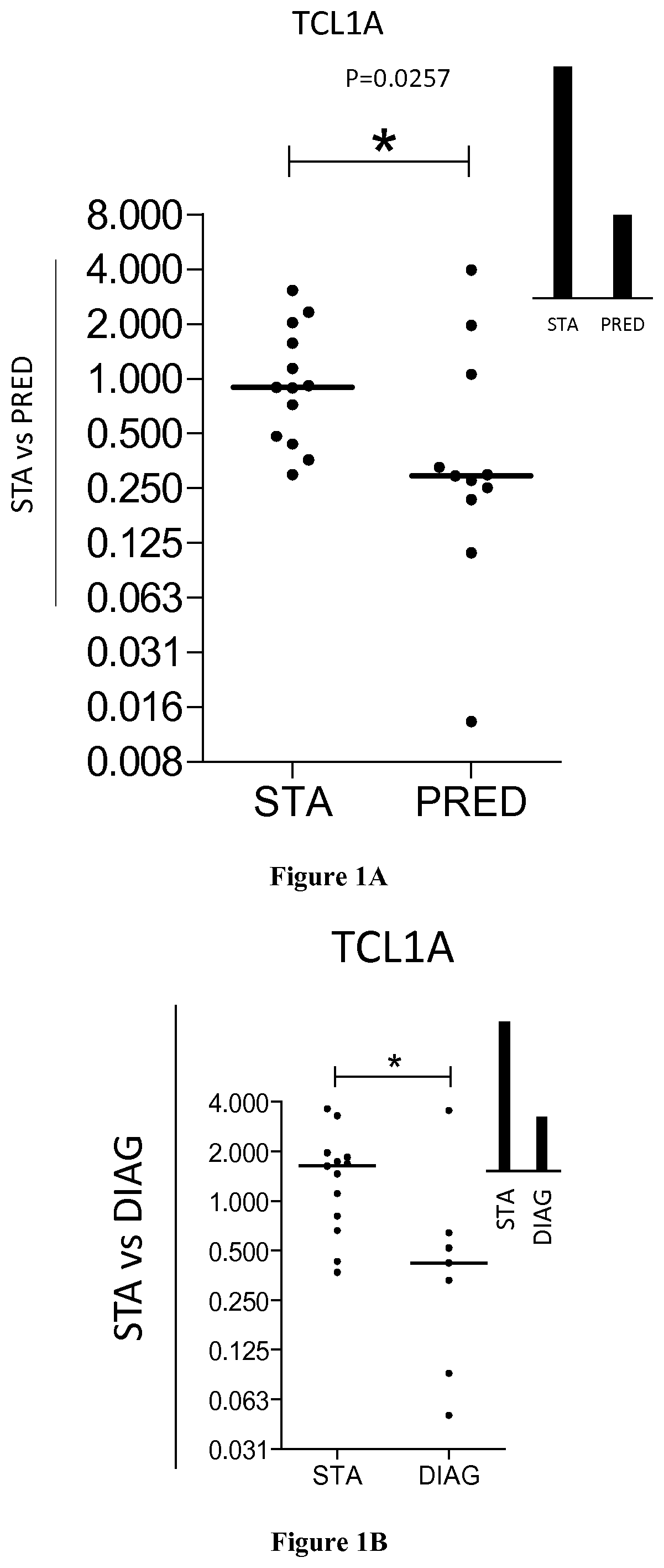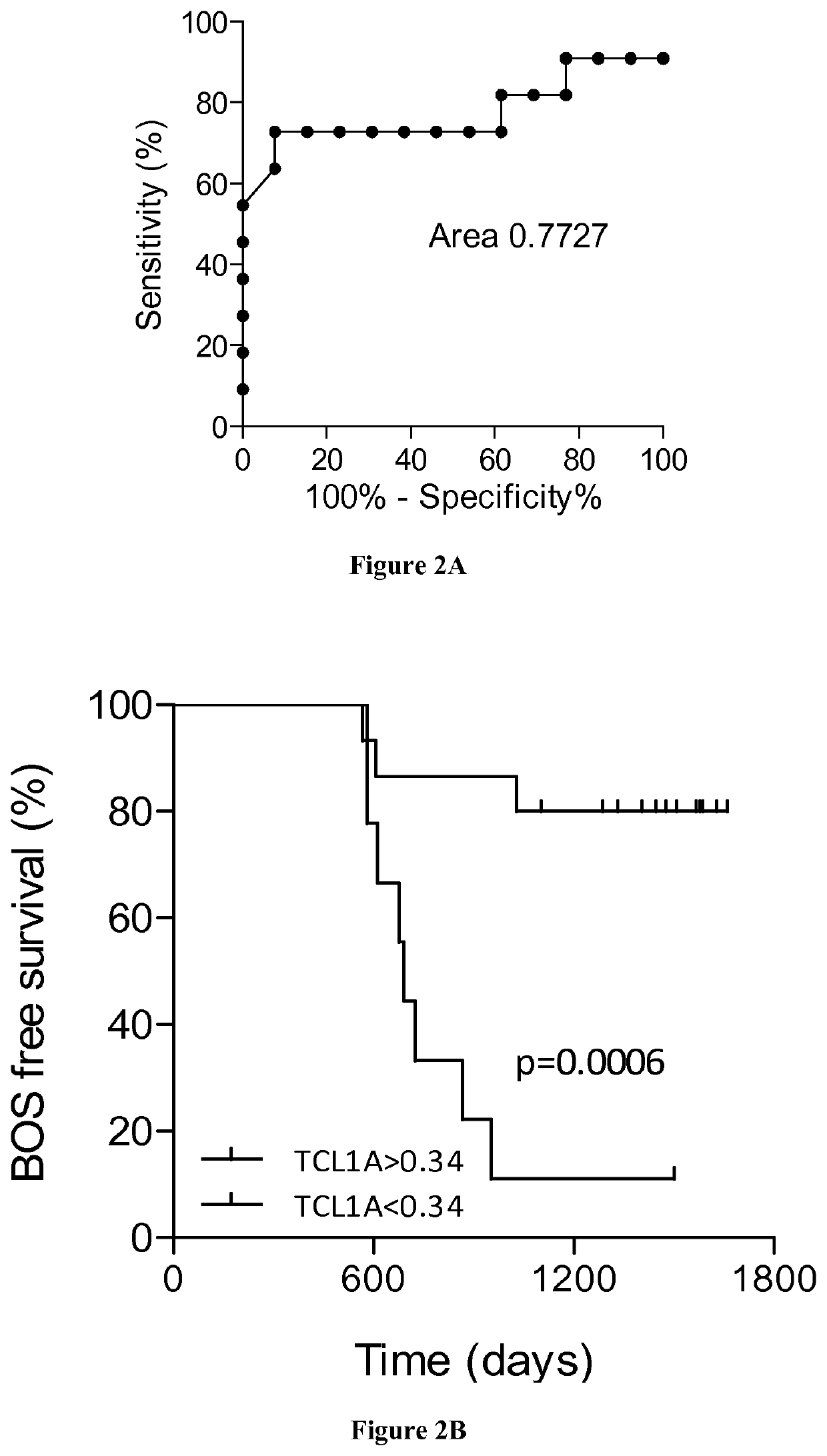Methods and Compositions For Predicting Chronic Lung Allograft Dysfunction
a technology of chronic lung allograft and composition, applied in the field of lung transplantation, can solve the problems of affecting the survival rate of patients with chronic lung allograft dysfunction
- Summary
- Abstract
- Description
- Claims
- Application Information
AI Technical Summary
Benefits of technology
Problems solved by technology
Method used
Image
Examples
example
[0035]Material & Methods
[0036]Patients
[0037]LTR were recruited within the multicentre COLT (NCT00980967) cohort. Study was approved by local ethical committee (Comitéde Protection des Personnes Ouest 1-Tours, 2009-A00036-51) and all participants provided written informed consent. Patients were defined as STA or BOS by a blind adjudication committee based upon pulmonary function tests: persistent Forced Expiratory Volume in 1 second (FEV1) decline of ≥20% from baseline for BOS group; chest imaging to confirm the diagnosis; and absence of confounding factors according to ISHLT / ERS / ATS guidelines (21, 22). Stable patients display no signs of chronic dysfunction for at least 3 years after lung transplantation. Eighty patients (40 STA and 40 BOS) were included in the identification set and 24 in the validation set (13 STA and 11 BOS).
[0038]RNA Isolation
[0039]Peripheral blood samples were collected in PAXgene tubes (PreAnalytix, Qiagen), and stored at −80° C. No infection or acute rejecti...
PUM
| Property | Measurement | Unit |
|---|---|---|
| Area | aaaaa | aaaaa |
| Level | aaaaa | aaaaa |
Abstract
Description
Claims
Application Information
 Login to View More
Login to View More - R&D
- Intellectual Property
- Life Sciences
- Materials
- Tech Scout
- Unparalleled Data Quality
- Higher Quality Content
- 60% Fewer Hallucinations
Browse by: Latest US Patents, China's latest patents, Technical Efficacy Thesaurus, Application Domain, Technology Topic, Popular Technical Reports.
© 2025 PatSnap. All rights reserved.Legal|Privacy policy|Modern Slavery Act Transparency Statement|Sitemap|About US| Contact US: help@patsnap.com


